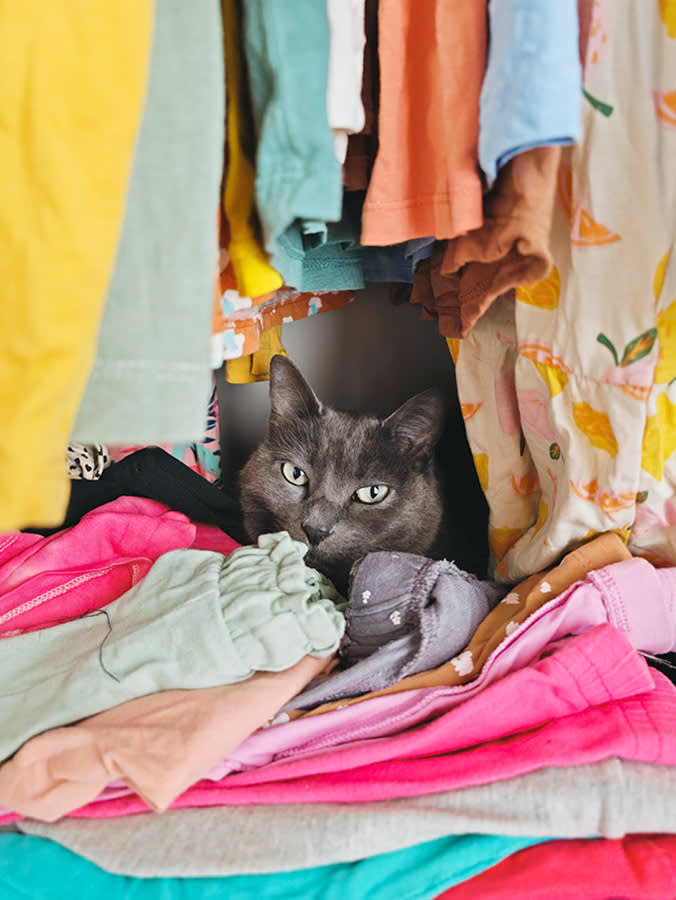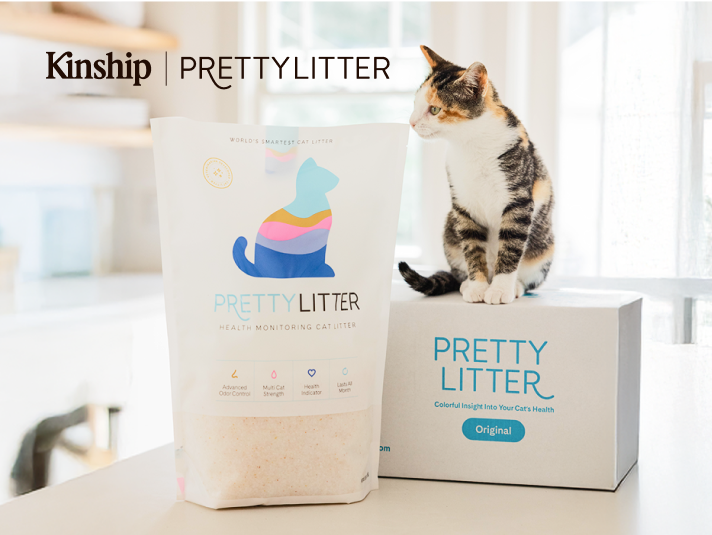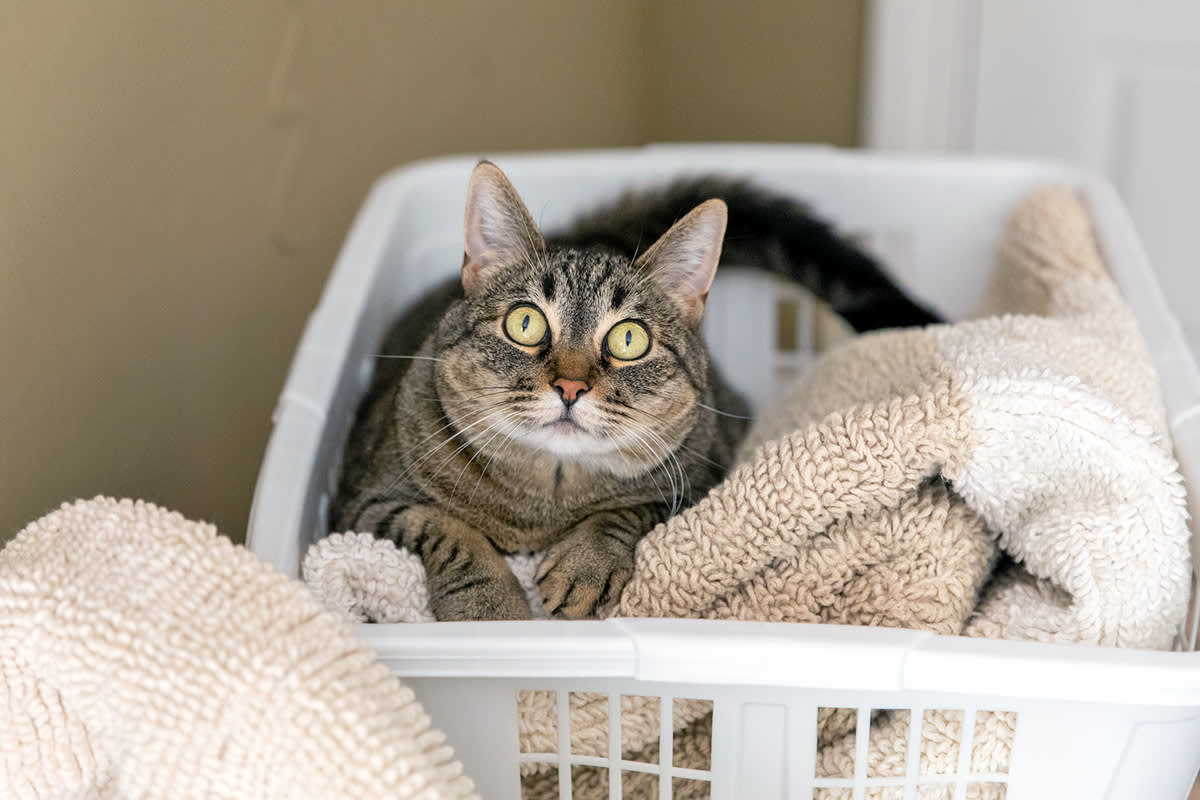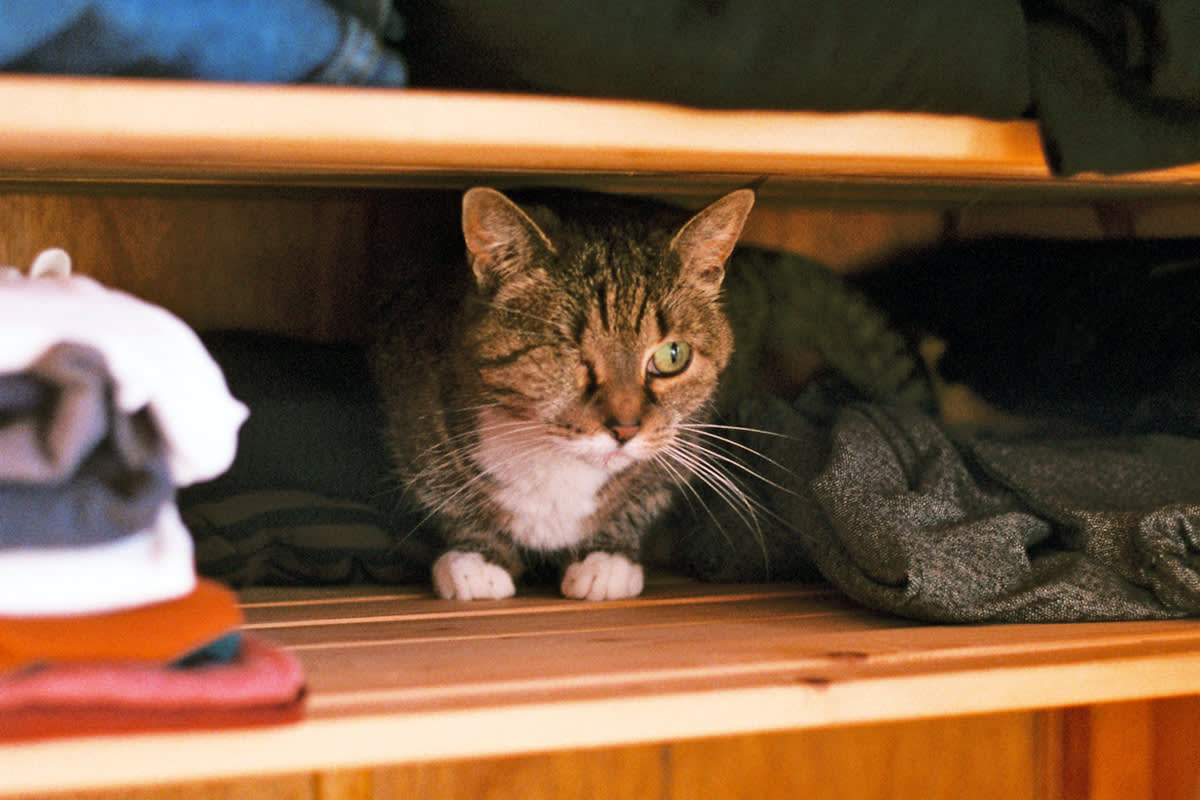Your Cat Isn’t Really Comforted by Items With Your Scent on Them, Study Says
Leaving them with your old shirt is nice and all, but other things may work better.
If you’ve ever purposely left behind a cozy sweater or some stinky socks for your cat to cuddle up to when you’re away from home, a study says your efforts might be in vain. October 2021 research published opens in new tab in Applied Animal Behaviour Science indicates that cats aren’t actually comforted by objects that smell like their human parents, threatening to dispel a commonly held belief about alleviating separation anxiety in cats.
The study evaluated 42 adult cats to determine how much the presence of their pet parent calmed them while in a new and unfamiliar environment, and also if their human caretaker’s scent alone was enough to reduce their stress levels. The study specifically looked at something called the “Secure Base Effect” (SBE), which it defined as “a human or non-human animal’s ability to use the presence of a bonded caretaker, or other familiar stimulus, as a source of comfort.” Each cat’s behavior was evaluated in three different conditions: in the presence of their pet parent, in the absence of their pet parent, and left alone with a “scent object” (something retaining their pet parent’s smell) present.
Save on the litter with color-changing tech that helps you better care for your cat.
Researchers found that cats tended to display fewer signs of stress and anxiety while their human caretakers were around, even in the unfamiliar setting used for the study — proving that we are essentially living, breathing festival chill-out tents for our cats. However, when cats were left alone with the “scent object,” it surprisingly made little to no impact on the cat’s stress levels.
Separation experiments performed on kittens in a separate study showed thatopens in new tab vocalized signs of distress start once a kitten is removed from their nest and that these distress signs only increase at further distances. This led researchers to conclude that the nest — with its strong scent of the kitten’s mom and littermates — serves as an “olfactory secure base” where a kitten feels most safe and content. And as any cat parent has likely observed, adult cats frequently engage in “allorubbing” with their human caretakers and surroundings, headbutting you to claim you as part of their territory.
How much do you spend on your pet per year?
And this makes sense: “Cats identify by scent, not sight,” says cat behaviorist Linda Hall. “They rely on their noses to identify everyone and everything.” With that information in mind, researchers behind this most recent study originally hypothesized that cats would display decreased stress and fewer vocalizations in the presence of their caretaker’s scent — only to have their expectations subverted when they observed that there was “no significant difference” in the frequency of their subjects’ stress vocalizations in the presence of a scent object. In some cases, the presence of the scent object actually seemed to increase the cat’s distress. Even more surprising, only half of the evaluated cats displayed the Secure Base Effect in the presence of their actual human parent.
While the results of this study might seem disappointing to the doting cat parent, Hall and her fellow behaviorist Rita Reimersopens in new tab said it’s important to make note of two aspects of the experiment that may have influenced its results. One, the “scent object” was introduced to the experiment room by a research assistant unknown to the cat — so the feline subjects may merely have been briefly unsettled by the presence of a stranger. Two, the experiment used very short observation periods that only lasted a few minutes, which may simply not have been enough time for the cat to identify the scent object as a source of comfort in the absence of their human companion. “In a new situation, [a cat] is always going to take a moment to adjust and figure out what’s going on before they get comfortable,” said Hall. “Had this gone on a few hours and they had gotten comfortable, maybe they would have gone over to that item and comforted themselves.” Reimers agreed. “It’s not a long enough study to definitively say [the scent object] doesn’t affect them.”
So: Should you leave out those old socks for your cat, or not? While it most likely doesn’t hurt to do so, there are much better waysopens in new tab to help a cat adjust to a new or changed environment. Reimers and Hall are advocates of going slowly, and advise limiting the cat to one area of the new space to start. “Set up a separate room,” says Reimers. “Put their litterbox in there — with a poop of their own in it — along with their food, water, things that they play with or blankets that smell like them.” While it might feel cruel to keep your cat confined to one room, it actually helps reduce their fear and anxiety. Hall says to think of it in terms of horror movies — if you’re in fear and find a place to hide out, would you rather it be a one-room cabin or a three-story house? A small, enclosed space the cat is able to fully survey gives them a crucial sense of security, and once they seem comfortable in the enclosed space you can then begin gradually expanding their territory to additional rooms.
It’s also paramount to stick to a regular routine, provide plenty of toys and enrichment activitiesopens in new tab, keep the environment as calm and quiet as possible, and establish easy access to necessities like food, water, and litterbox. You can go ahead and leave that well-worn old sweater out, too — but if you return home to find your cat sleeping on it, it may just be because it’s soft. Because if there’s one thing all cats would probably agree on — when it comes to your smell, there’s just nothing like the real thing.





